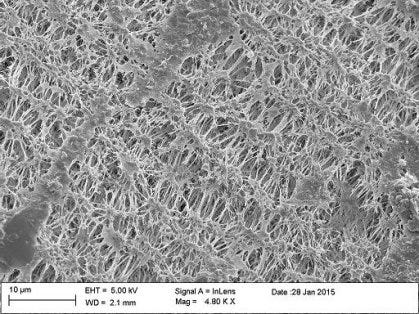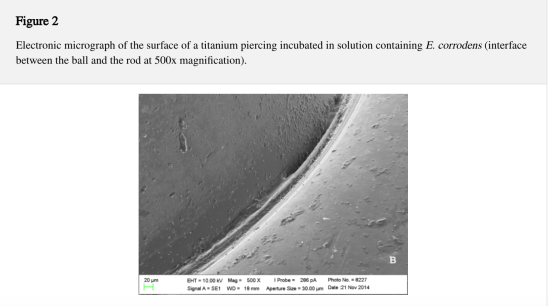Piercers are always being asked ‘what is the best way to hide my piercing?’
We also frequently get asked what to wear when undertaking medical procedures such as MRIs and surgery. There are a few different options to consider in terms of piercing retainer, and we will discuss them today.
Do You Even Need a Retainer?
The biggest thing to consider is, does the client actually need a retainer in the first place? There are a few things to consider in this case. Firstly, how old is the piercing? A well-healed piercing can usually sustain itself without jewellery for a short while, such as for the duration of an MRI which usually lasts between 15 and 90 minutes. For MRIs and other short procedures, it is recommended to remove the jewellery just before the procedure, and reinsert it as promptly as possible afterwards. You may need an insertion tool or taper to help you do this, which we recommend buying in advance from your piercer, if this is an item they offer. If you are not confident in changing or reinserting your jewellery yourself and have a medical procedure coming up then please get in touch with your piercer! Most piercers are more than happy to help you remove and reinsert your jewellery either free-of-charge or for a minimal fee in the case of medical procedures.
If your piercing is still relatively young, or is in a placement that closes more quickly such as an oral piercing, it is best to purchase a retainer well in advance of when you need it.
The Gold Standard Retainer
Even though 99% of quality body jewellery is ASTM F-136/F-1295 Titanium or solid 14k and 18k Gold which are all generally MRI safe, a lot of medical practitioners will ask the client to remove their jewellery before procedures regardless. If the client feels confident in doing so, you can encourage them to self-advocate to their MRI technician and medical team. Quality studios are happy to provide clients with the paperwork required to prove the jewellery is MRI safe if the client needs it. However if the client does need to remove their jewellery (as is common - Most medical professionals will insist regardless of paperwork), for example if the procedure is on the head or face, then do consider recommending a retainer.
If the procedure is longer than a couple of hours, or if the client will be in recovery from anaesthetic and not in a position to immediately begin reinsertion, we’d recommend purchasing glass jewellery as a retainer. Glass is the perfect retainer piece, being inert and transparent so as not to leave an afterimage on any x-rays or imaging work the client has done. Lead-free Borosilicate Glass is also totally nonporous and body safe – It is truly the gold standard. If you have a procedure coming up, we highly recommend contacting your quality studio to organise ordering glass retainers for any piercings that you are worried may close. Although most studios should carry a small stock of retainers for this purpose, it is best to give as much notice as practical as certain items may need to be ordered in.
Glass is one of the best materials for body piercing and is usually the material of choice for stretching amongst professional piercers, although clients do not need to stretch their piercings to wear it. Glass jewellery is available in every size and thickness. One of the biggest advantages of glass for piercing jewellery is its non-porous, extremely smooth surface. This allows for easy and frictionless insertion and removal of the jewellery. It also means that the jewellery can be easily cleaned and will not collect bacteria as with a porous structure such as acrylic, plastic or wood.
Aside from being great for medical reasons, glass is also a handy way of concealing piercings for work or school. Glass is reflective though, so do consider other options like the Neometal ‘Freckle’ Discs if you want something extremely subtle.
The Unsafe Piercing Retainer
Retainers, although intended for short term wear, should still be implant-grade and body safe. Anything that is inserted into the body needs to be safe to wear. So where does plastic jewellery stand? Plastic jewellery is pervasive in the low-quality piercing industry. Whether that be under specific brand names, in the form of flexible a plastic ‘retainer’ or classic acrylic jewellery, plastic jewellery is everywhere. So why do good piercers not recommend it? What is the issue with flexible plastic jewellery?

The main issue with plastic jewellery is that plastic is porous and rough in texture, and made from unregulated mystery polymers. When something is porous, it means that it is covered in small holes that allow liquids to pass through. This means that bacteria and other pathogens have crevices in which to grow. The porous nature of plastics can allow a thick, difficult to remove bacterial colony called Biofilm to develop. We will cover more information on Biofilm in an upcoming post, or you can look at my Biofilms infographic on Instagram!
This biofilm can cause severe irritation to a piercing, alongside causing nasty odours and excessive crusting. The roughness of the texture of plastic also means that it is constantly rubbing the inside of the piercing like sandpaper. This can cause irritation bumps, scar tissue formation, and can significantly damage the inside of your piercing. There is little research into plastics that act as an implant such as in piercings, however a study performed in 2016 showed that plastic or teflon jewellery was found to carry up to ten times more bacteria and biofilm than the same type of jewellery made from highly-polished Titanium, (Borges et al, 2016). This study also viewed the different jewellery under a microscope to visualise the difference in surface finish and bacterial build-up (yummy!).

All this aside, the number one reason why quality studios do not stock plastic jewellery is because we simply do not know what it is made from. There are seven main categories of plastic, however there are thousands of different plastic polymers with their own composition and characteristics. No plastic jewellery manufacturer is willing to divulge the exact plastics they use.
With every single piece of jewellery quality studios stock, we receive certification that it is A) What it says it is, and B) Made from a material proven to be implant-grade and safe to wear. We simply do not have this information for plastic jewellery.
Some plastics have been shown to release carcinogenic or toxic compounds at body temperature (Penghui et al, 2024), such as BPA or other compounds like N-(1,3- dimethylbutyl)-N′-phenyl-p-phenylenediamine when ingested and degraded within the internal human environment. The complex internal conditions of the body could also be releasing toxic additives from plastics via action from enzymes, acids, skin flora etc. This could be specifically concerning when plastic jewellery is worn in irritated or fresh piercings where these compounds have direct access to the blood and lymphatic systems. However if you read the full paper I’m referencing, they are also relatively conservative in stating what effects these compounds might have on human health. The evidence is limited, mainly due to the difficulty in nailing down which exact compounds are having what impacts. The human body is frustratingly complex. If you’ll allow me a personal opinion moment, I feel like microplastic health impact research right now feels like the research taking place in the 1940s and 1950s in regards to the health effects of tobacco. Everything felt very up in the air and uncertain, until suddenly it really wasn’t. Personally, I will be keeping a close eye on microplastic research in the upcoming years.
It must be stated that as with most piercing topics, direct research is incredibly limited. We are a small industry with little research interest and pretty much no money.
All plastic jewellery degrades over time, both physically and chemically, and could potentially cause issues at any point. It’s our prerogative within the piercing industry to provide our clients with safe jewellery that can last a lifetime, which is why plastic should not be offered at quality studios. If you do have to have plastic jewellery as a piercing retainer, do use it as an absolute last resort and remember that it is only recommended to wear for a maximum of 8 hours before being discarded. Plastic is not at all made for long-term wear.
An interesting update from the first time I published on this topic back in 2022 is a 2024 paper that discusses the release of microplastics from dental retainers. Of course, this is not the same as piercing retainers although the implications could be the same. Given that both are worn long-term within the oral cavity. This review article by Panayi et al. in the Journal of the World Federation of Orthodontists discusses the health implications of ingestion of microplastics from orally-worn plastics. Microplastics, and BPA, are widely thought to disrupt the gut microbiota and have a potential impact on GI health. Once ingested, microplastics can have systemic impacts by interacting with a wide range of biomolecules. Although currently in the nascent research phase, this could be yet another cause for concern in regards to plastic oral jewellery such as the ubiquitous plastic tongue barbell.
So there you have it. My main takeaways are:
Most piercings, if reinserted in a timely fashion, may not need a retainer.
Glass retainers are the safest option.
Plastic retainers are, at best, a last resort to be worn for as short a period as possible.
If you have any questions, don’t hesitate to contact me on social media or via email at 18ctpincushion@gmail.com
References
Borges, L.P., Ferreira-Filho, J.C.C., Martins, J.M., Alves, C.V., Santiago, B.M. and Valença, A.M.G. (2016). In VitroAdherence of Oral Bacteria to Different Types of Tongue Piercings. The Scientific World Journal, [online] 2016, pp.1–6. Available at: https://www.hindawi.com/journals/tswj/2016/7349371/ [Accessed 23 Sep. 2021].
Li, P. and Liu, J., 2024. Micro (nano) plastics in the human body: sources, occurrences, fates, and health risks. Environmental Science & Technology, 58(7), pp.3065-3078.
Panayi, N., Papageorgiou, S.N., Eliades, G. and Eliades, T., 2024. Microplastics and orthodontic aligners: The concerns arising from the modernization of practice through polymers and plastics. Journal of the World Federation of Orthodontists.





